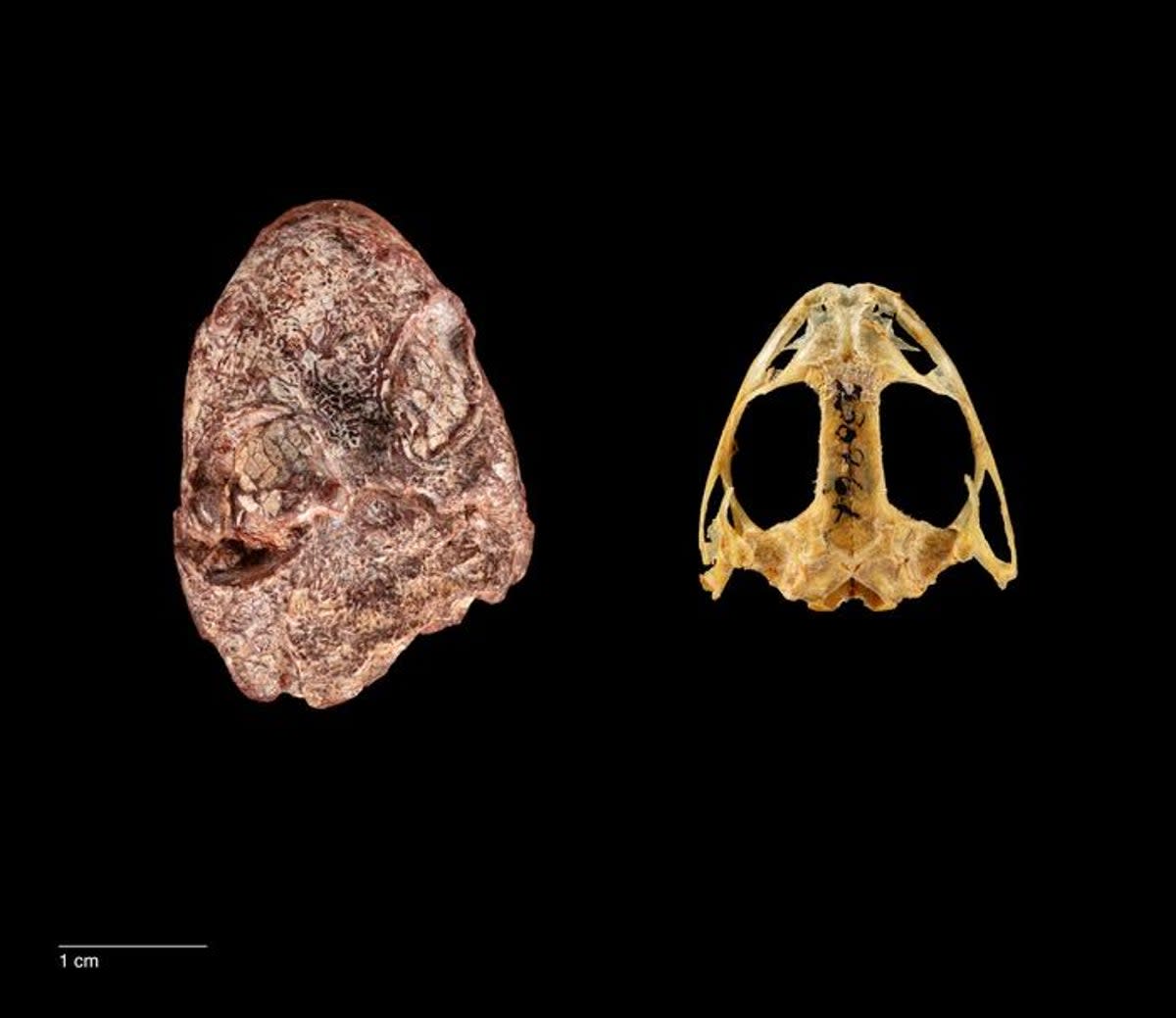Ancient amphibian ancestor discovered and named after Kermit the Frog

Scientists have discovered an ancient amphibian ancestor that lived 270 million years ago and named it in honour of the iconic Muppet character Kermit the Frog.
The extinct species, which has been named Kermitops gratus, was discovered by analysing a fossilised skull part of the collection of the Smithsonian’s National Museum of Natural History.
The skull, described in a new study, measures just over an inch long with large, oval-shaped eye sockets and was discovered in the 1980s in the Clear Fork rock formation in Texas by late palaeontologist Nicholas Hotton III.
So many fossils were collected at the time that it became impossible to study them all in detail at once, and the proto-amphibian skull spent decades waiting in the museum for a researcher to take a closer look.
It finally caught the eye of postdoctoral paleontologist Arjan Mann, who sought to determine the species the skull belonged to.
“Using the name Kermit has significant implications for how we can bridge the science that is done by paleontologists in museums to the general public,” said Calvin So, doctoral student and lead author of the new study.
“Because this animal is a distant relative of today’s amphibians, and Kermit is a modern-day amphibian icon, it was the perfect name for it,” he added.
Researchers observed that the skull possessed a combination of traits that were different from those seen in the skulls of known ancestors of amphibians and other four-legged terrestrial animals.
Citing one such peculiar feature of the animal, scientists said the skull region behind the animal’s eyes was much shorter than its elongated and curved snout.
Based on the skull’s proportions, researchers suspect it likely resembled a stout salamander and ate tiny grub-like insects.
They concluded that the species belonged to an entirely new genus, which they named Kermitops.
The latest finding, researchers say, fleshes out the amphibian family tree and helps narrow down how frogs, salamanders, and their relatives originated.
With Kermitops as a reference, scientists hope to further understand how frogs and salamanders developed their specialised traits.

 Yahoo News
Yahoo News 
